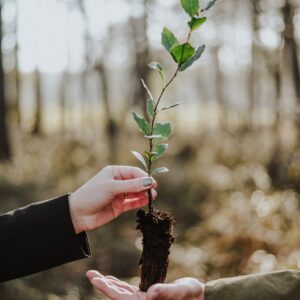Circet x Go Forest
Circet Benelux and Go Forest join forces for a sustainable adventure with the launch of the Circet Forest. This green initiative is our next step towards an environmentally conscious future and reducing our ecological footprint. We are planting 2000 trees, distributed across two centrally located sites: Lasne Maransart (Belgium) and Eerbeek (Netherlands). These locations have been carefully chosen to maximize contribution to the health of our planet.
But it doesn’t stop there!
As part of our mission, we are eager to involve our colleagues. Through our platform, you have the opportunity to plant additional trees and actively contribute to the growth of the Circet Forest. Together, we are not only creating a greener planet, but also sending a powerful message of engagement and sustainability. Join us and let’s make a difference together!
Belgium 🇧🇪
-

Tree in BE
€ 6,70
Location: Lasne Maransart (40 km from Brussels)
Project: reforestation of 1.7 hectares with 4200 trees
Timing: winter planting season 2023-2024, last additions in 2024
Reason for reforestation: Replanting is necessary because there are no natural seedlings (except birch) on the plot. Diversification of species is necessary for resilience to climate change.
Tree species: 80% Sessile oak, 10% Winter lime, 10% Byzantium hazelnut.
Organization of the planting: In the center of the plot we plant mixed rows of 3 oaks and 1 lime, in a staggered pattern (2×2.5m). At the edge of the plot, we plant 4 rows along the road to the north.
Netherlands 🇳🇱
-

Tree in NL
€ 6,70
This restoration project of 0.75 ha is located in Coldenhove, Eerbeek. During the winter of 2023-2024, we will plant 3,400 new trees in rows and take natural regeneration into account. The seeds are supplied by Bosgroep and the tree species that are planted are chestnut trees, thuja, cedar, and Douglas fir.
The previous stand consisted mainly of conifers, such as spruce, which were attacked by the bark beetle. Afterwards, only dead trees remained on the plot.
In the past, the bark beetle mainly affected weak trees, which were unable to produce resins or other compounds to protect themselves against the insect. But since climate change – and therefore temperature rise – there has been a large increase in the insect and the spread of outbreaks has affected much of Europe’s coniferous forests. Outbreaks of tree-killing bark beetles have reached unprecedented levels in coniferous forests in the Northern Hemisphere and are expected to increase further due to climate change. This event has once again demonstrated the importance of a diverse forest that is more resistant and resilient to disturbances.
The main objective of this project is to restore the forest area by planting a mix of species to promote the creation of a diverse and multifunctional forest. This forest must be able to absorb the effects of climate change while providing a wide range of ecosystem services in the areas of biodiversity, timber, air and water purification, carbon storage, human health, etc.









